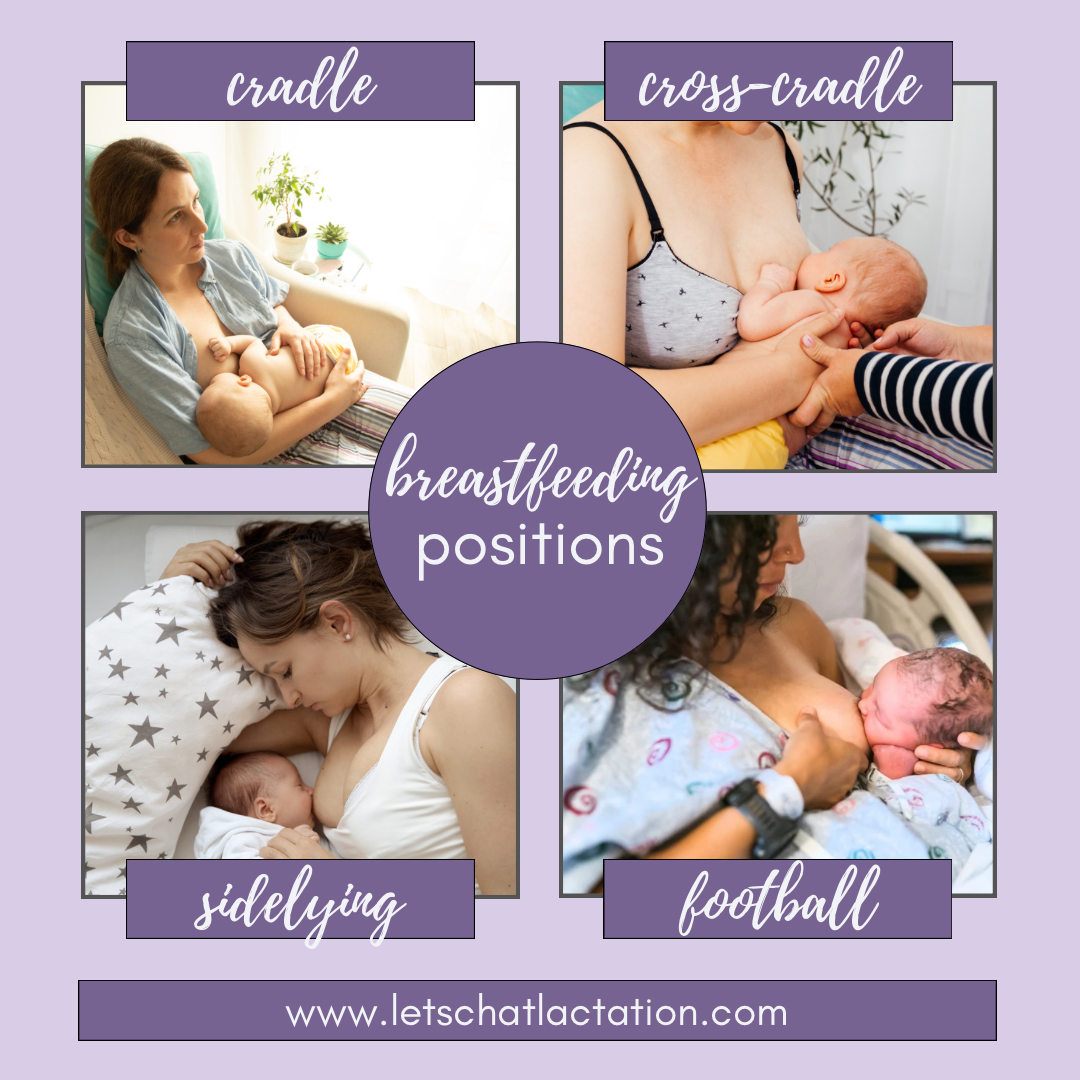The classes, videos, and pictures make it all look so easy. Just snuggle close and relax and let your baby do their thing. There is something to be said for kicking back with your baby on your chest and letting them find their way to the nipple. Believe it or not, they were born for this. But just in case it doesn’t come that easy, let’s chat positioning and latch.
Positioning
Most importantly, get yourself comfortable sitting, reclining, or lying down. Gather whatever pillows or comfort items you may need. If you’re looking for a great nursing pillow try this one by My Brest Friend. Have your water handy if it’s in your souvenir bottle from the hospital or a Stanley. Place your phone, reading materials, or music to calm you nearby. When you are ready to pick up your bundle of joy you can try some of these more official positions to get started.
Types of Positions
Laid Back
We like to think of the laid back position as square one. This is typically how you will nurse your baby for the first time. This relaxed, reclined position lets your baby follow their instincts. Place your baby vertically on your abdomen and rest their cheek on your breast. Use one hand to support your baby’s head and neck and the other to support their hips. Kick back and snuggle and allow your baby to search and find their way to the nipple, gently guiding them where you see a need.
Cross-Cradle
In this position, you will support your breast with the hand on the side you are nursing, and cradle your baby with the opposite arm, holding them across your body. Build baby up to breast level. Tuck your baby’s sweet little bottom into your elbow and support their trunk on your forearm. Turn their whole body into you like a hug. Keep your baby’s ear, shoulder, hip, and knee aligned as they are turned toward you. Make a C shape with your fingers and thumb. Place the heel of your palm between their shoulder blades and wrap your fingers behind their ears to support the head and neck.
Cradle
This classic hold is cozy for nursing. To accomplish this hold, support your baby’s body with the arm from the same side you are nursing. If you are nursing on your right breast, use your right arm to build your baby up on your forearm and extend it down their body to support their bottom. Remember to keep your baby built up to breast level, rolled in belly to belly, with their nose aimed at your nipple.
Football Hold
The football hold positions your baby on the side of your body. This hold is particularly beneficial for mothers who have had a cesarean and want to avoid putting the weight of the baby on their incision. The football hold is also helpful for mothers who have large breasts. Place a pillow on the side of your body that you are nursing on. Use that same arm to support your baby and the opposite hand to support your breast. As always, keep your baby turned in toward you, this time tucking their legs and feet behind you.
Sidelying
This position supports rest. While lying on your side, place your baby on their side facing you. Tuck the arm you are laying on around their body to support their neck and back. If you have a bassinet or crib near your bed this position allows for minimal sleep disruption throughout the night.
Latching
A proper latch is key for comfortable nursing. To achieve a proper latch, you should
- Build your baby up to breast level
- Turn their body in to face you
- Line up your nipple to their nose
- In C or U shape of your hand support your breast tissue BEHIND your areola, keeping your fingers away from the area baby should latch on to
- Slightly tilt your baby’s head back
- Allow for your baby’s chin to touch the underside of your areola
- Gently stroke your nipple across the lips top to bottom
- Wait patiently for your baby to open their mouth wide
- Quickly bring baby to breast chin first with your nipple aimed at the roof of their mouth
Signs of a good latch
- Your baby has 140 degree angle at the corner of their mouth
- They have as much breast tissue as they can comfortably fit
- They have more of the underside of the areola in their mouth than the top
- Their lips are rolled out ( flanged) on either side
- Baby’s tongue is under the nipple
- There is no pain (pinching or biting sensation)
- Noticeable swallows, long jaw-dropping motions, occasional soft “cah” sounds
Proper positioning and latch are essential to comfortable nursing. Try a variety of holds in the beginning to find what works best for you and your baby. You can always switch it up! Keep your baby at breast level, properly aligned, and turned into you while supporting their head and neck. Focus on getting a good deep latch, and remember that practice makes progress! For more helpful information check out our post on GETTING STARTED and follow us on social media.




There is perceptibly a bunch to realize about this. I suppose you made certain nice points in features also.
Hi my loved one! I want to say that this article is amazing, great written and come with almost all important infos. I’d like to look more posts like this .
I think this web site contains some real wonderful information for everyone :D. “Believe those who are seeking the truth doubt those who find it.” by Andre Gide.
What’s Happening i am new to this, I stumbled upon this I have found It positively useful and it has aided me out loads. I hope to contribute & assist other users like its helped me. Great job.